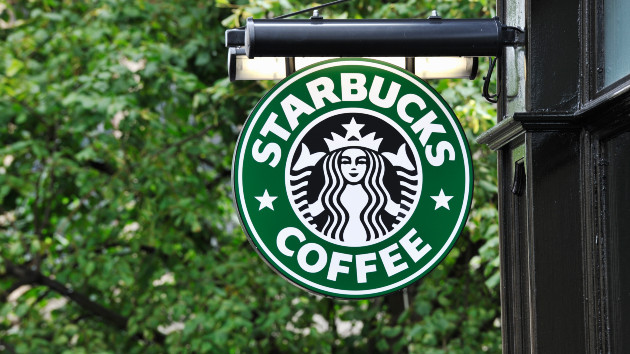
To the casual observer, canned seafood, or “tinned fish,” appears to be having a moment.
Stacks of tins, filled with everything from mackerel to octopus, have been filling social media feeds, complete with intricate, colorful, and Instagram-friendly packaging. Brands like Fishwife, founded in 2020, tout “responsibly sourced tinned fish” for “heavenly hors d’oeuvres” and “charming charcuterie.”
In August, a colorful shop that specializes in canned seafood called The Fantastic World of the Portuguese Sardine opened in New York City’s Times Square.
“The theme is kind of this magical library,” says Joanna Quaresma, the project manager for the shop. The Fantastic World of the Portuguese Sardine is packed with floor-to-ceiling shelves of tinned fish, known as “conservas” in Portuguese culture.
“It’s something that is very, very cherished in our culture,” Quaresma tells ABC Audio.
She says the store sells more than 20 different varieties of tinned seafood, including a display of cans designed to look like gold bars. The $44 tins come with gold leaf inlays alongside meticulously skinned and de-boned sardines.
“The gold bar was us trying… and I think we managed, to elevate the sardine to its highest level,” says Quaresma.
But the shop, as well as the recent explosion of tinned fish content, divides opinion in the culinary community.
“There is a stunty, touristy, showy, kind of element to it now,” says Amy McCarthy, a staff writer for the food website Eater. “When something like tinned fish becomes a status symbol, that is such an opportunity for brands to jump on the train and, like, just start charging you a premium for a product that isn’t necessarily premium but has a really cool looking package.”
Dan Waber is the co-owner of the Rainbow Tomatoes Garden, a farm in Pennsylvania that, in addition to selling a full crop of heirloom tomatoes, also sells a huge variety of tinned seafood from around the world. Waber says the European locations of The Fantastic World of the Portuguese Sardine are seen in the tinned fish community as a tourist trap, selling middling products at exorbitant prices. The company’s New York City location, he says, is more of the same.
“You have graduated from fleecing customers in Portugal to fleecing the world’s customers in, what is basically the center of the universe for fleecing tourists,” says Waber.
Quaresma says the gold bars are her company’s attempt to bring Portugal’s relationship with tendency food to the masses. She says prices at The Fantastic World of the Portuguese Sardine can be high because the company wants every part of their supply chain, from the fishermen to the workers in the factory, to be compensated fairly.
“Criticism, if it’s constructive, we appreciate it,” says Quaresma.
The process of canning fish stretches back to the mid-1800s. The first Portuguese tins of tuna, mackerel, and sardines were made by the Ramirez Canning Company in 1865. But the cuisine’s influence stretches far beyond Portugal.
“France, the Philippines, Japan, really any country with a coast, has a rich history of tinned seafood,” says Waber.
Sardines and tuna are just the start of the veritable ocean of seafood available in a can. The Rainbow Tomatoes Garden website advertises muscles nestled alongside allspice and bay leaf, mackerel with coriander and juniper, and white tuna stuffed inside sweet red peppers.
“The products are sensational. I mean that’s another huge factor,” says Waber. “People try them, and then they go, ‘there’s 700 of these things?'”
Waber says calling the current moment a “tinned fish trend” misses the mark. He says tinned fish has always been around, and always been popular, if you knew where to look.
“A significant portion of the population that has been consuming these products sort of in secret, or without telling anybody,” says Waber, adding that the rise of social media has contributed to the buzz.
Mei Liao makes culinary videos on TikTok and Instagram centered, in part, around the world of canned seafood. She even has a recurring series she calls “Tinned Fish Talk.”
“Each episode I introduce a type of fish or a concept related to tinned fish and try to provide a background and – almost more education-forward resource,” says Liao.
Liao is ethnically Chinese, and her parents are first-generation immigrants. She says tinned fish is fundamental to many food cultures around the world, including her own.
“A big part of the culture that I’m then able to inherit and understand my heritage though, is translated through cooking,” says Liao.
She says for her, and for many around the globe, tinned fish isn’t a trend. Rather, it’s a staple.
“To think of it as a trend food or to think of it as something that is only recently been discovered, I think does a disservice to the many cultures that incorporate tin fish as a really kind of key component of their diet and culture,” says Liao.
Waber says whether you’re new to the world of tinned seafood, or a seasoned pro, the important thing is to try as many different varieties as possible.
“The products are delicious, and convenient, and you should try some,” says Waber.
Hear the full story in “Let’s Eat” from ABC Audio:
Copyright © 2023, ABC Audio. All rights reserved.









